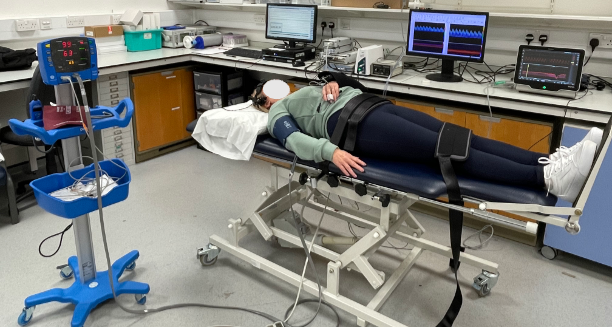About the study
High-level spinal cord injury (SCI ≥T6) results in disturbances to autonomic cardiovascular function. Repeated exposure to transient episodes of low blood pressure is a leading factor related to a decline in cerebrovascular health. Poor autoregulation of brain blood flow in response to systemic changes in blood pressure, as well as tasks requiring greater neuronal activity, may therefore explain the reported reduction in cognitive functioning following SCI.
We want to compare blood pressure and brain blood flow responses to a head up tilt test and eyes open/eyes closed tasks, along with cognitive functioning and 24-hour blood pressure stability between individuals with SCI and a healthy, uninjured individuals.

How to get involved:
We are looking to recruit healthy, uninjured individuals that match the age, sex and education status of a cohort of SCI individuals we already have recruited. Potential volunteers must meet the following criteria:
- Match to one of the participant characteristics below
- Not have a SCI or diagnosed neurological condition
- Have no history of untreated cardiovascular disease, Type 1 or Type 2 diabetes, severe brain injury or a clinical diagnosis of depression
Characteristics of participants we are seeking:
A: Male aged 34 – 38 years with a high school education
B: Male aged 40 – 44 years with a high school education
C: Male aged 44 – 48 years with a postgraduate education
D: Male aged 48 – 52 years with a high school education
E: Female aged 48 - 52 years with a college education
F: Male aged 50 - 54 years with a high school education
G: Male aged 61 – 65 years with a postgraduate education
Participants will complete a round of cognitive assessments (lasting up to 60 minutes) and then undergo a head-up tilt test and eyes open/eyes closed tasks with beat-by-beat monitoring of heart rate, blood pressure and brain blood flow (lasting up to 90 minutes). A blood pressure monitor will then be worn for 24-hours to capture free-living blood pressure stability outside of a lab environment.
Click here if you are interested in taking part in the project.